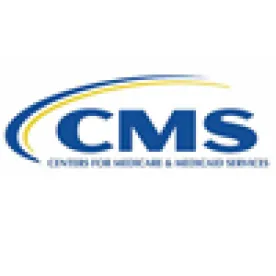On April 22, 2019, the U.S. Department of Health and Human Services (“HHS”) and Centers for Medicare & Medicaid Services (“CMS”) announced the CMS Primary Cares Initiative (the “Initiative”), which consists of new payment models that seek to transform primary care in order to deliver better value for patients. The Initiative aims to improve quality and patient experience of care while reducing administrative burdens and lowering overall healthcare costs. The Initiative consists of five (5) payment model options in two broad paths: (1) Primary Care First and (2) Direct Contracting.
The two (2) payment models under Primary Care First are:
- Primary Care First – General
- Primary Care First – High Need Populations
The three (3) payment models under Direct Contracting are:
- Direct Contracting – Professional Population-Based Payment
- Direct Contracting – Global Population-Based Payment
- Direct Contracting – Geographic Population-Based Payment
Primary Care First
The Primary Care First (“PCF”) payment models are voluntary five-year payment options that focus on improving patient care and outcomes to support the delivery of advanced primary care. PCF incentivizes primary care practices to assume financial risk and reduce cost of care and hospital utilization in return for a reduced administrative burden and performance-based payments. PCF also aims to be transparent and promote accountability by providing payment to participating primary care practices through a simple payment structure and providing participants with practitioner-identifiable information of their own and other participants’ performance. The PCF compensation structure contemplates a population-based payment, a flat primary care visit fee, and a performance adjustment assessed and paid quarterly that provides an upside of up to 50% of revenue and a small downside of 10% of revenue.
To be eligible for PCF, the primary care practice must:
-
- Be located in one of the selected PCF regions;[1]
- Include primary care practitioners (MD, DO, CNS, NP, and PA), certified in internal medicine, general medicine, geriatric medicine, family medicine, and hospice and palliative medicine.
- Provide primary care to at least 125 attributed Medicare beneficiaries at a particular location;
- Have primary care services account for at least 70% of the practices’ collective billing based on revenue. If the practice has multiple specialties, 70% of the practice’s eligible primary care practitioners’ combined revenue must come from primary care services;
- Have experience with value-based payment arrangements or payments based on cost, quality, and/or utilization performance;
- Use 2015 Edition Certified Electronic Health Record Technology (CEHRT);
- Attest on the application to advanced primary care delivery capabilities;
- Be able to meet the requirements of the Primary Care First Participation Agreement.
The second PCF model, the Primary Care First – High Need Populations model, offers higher payments to primary care practices that specialize in care for high need patients, including people with complex, chronic needs and seriously ill beneficiaries, who currently lack a primary care practitioner and/or care coordination. This includes practices whose clinicians are enrolled in Medicare and provide hospice or palliative care services.
CMS anticipates releasing a Request for Application in spring 2019 for the first group of PCF participants. Participation in the program for these applicants will begin in January 2020. Practices currently participating in CPC+ Track 1 or 2 may choose to end their participation early in order to participate in PCF starting in January 2021.
Direct Contracting
The Direct Contracting (“DC”) models aim to transform fee-for-service (“FFS”) in Medicare by offering capitated and partially capitated payments to model participants. The DC models also seek to broaden organization participation by appealing not only to current Medicare Shared Savings Program and Next Generation ACO participants, but also to organizations that are new to Medicare FFS and the CMS Innovation Center, such as physician-managed organizations currently operating only in the Medicare Advantage program, Medicaid Managed Care Organizations that want to be responsible for Medicare FFS spending for dually eligible members, and innovative organizations that desire to assume responsibility for Medicare FFS beneficiaries within a target geography. Like PCF, DC aligns financial incentives and reduces administrative burdens to incentivize participants to assume risk and improve patient outcomes. DC allows for three (3) options for participants to take on risk, and each model includes elements to encourage care of patients with complex, chronic conditions and seriously ill populations.
Professional. In the Professional Population-Based Payment (“PBP”) model, the participating provider will participate in 50% of shared savings and losses on the total cost of care (i.e. all Parts A and B) for aligned beneficiaries. In addition to the 50% shared savings and losses, participants will receive a capitated risk-adjusted monthly payment for enhanced primary care services, which is 7% of the total cost of care for enhanced primary care services (“Primary Care Capitation”).
Global. Participants in the Global PBP model will bear more risk than participants in the Professional PBP model, with financial responsibility for 100% of shared savings and losses on the total cost of care for aligned beneficiaries. In addition to the 100% shared savings and losses, participants will be able to choose among two (2) payment options: (1) Primary Care Capitation or (2) a capitated risk-adjusted monthly payment for all services provided by DC participants and preferred providers with whom the model participant has an agreement (“Total Care Capitation”).
Geographic. Participants in the Geographic PBP model will bear 100% of shared savings and losses on the total cost of care for aligned beneficiaries in a defined target region. Under this model, innovative organizations, such as health plans and healthcare technology companies, will have the opportunity to assume the care of a population in certain defined target region. CMS has issued a Request for Information in order to seek public comment and feedback on this payment option, and responses are due on May 23, 2019.
While CMS has not indicated an anticipated timeline for the Professional PBP and Global PBP DC models, the CMS Innovation Center will be requesting a non-binding Letter of Intent from organizations who are interested in participating in those models. CMS expects to initiate the application process for the Geographic PBP model in fall 2019.
The Initiative presents a novel opportunity for primary-care focused organizations looking to expand their participation in risk arrangements. The new payment models allow primary care providers to contract directly with CMS to assume different levels of financial risk for the health outcomes of Medicare beneficiaries. Through reduced administrative burdens and performance-based payments, participating providers are rewarded for increasing quality of patient care rather than quantity, especially in the context of providing care to patients with chronic conditions and serious illnesses. CMS anticipates that the Initiative could result in nearly 11 million fee-for-service Medicare beneficiaries becoming part of value-based payment relationships. Primary care practices with an interest in risk would be well-advised to consider whether and to what extent to participate in the Initiative.
[1] These regions are: Alaska (statewide), Arkansas (statewide), California (statewide), Colorado (statewide), Delaware (statewide), Florida (statewide), Greater Buffalo region (New York), Greater Kansas City region (Kansas and Missouri), Greater Philadelphia region (Pennsylvania), Hawaii (statewide), Louisiana (statewide), Maine (statewide), Massachusetts (statewide), Michigan (statewide), Montana (statewide), Nebraska (statewide), New Hampshire (statewide), New Jersey (statewide), North Dakota (statewide), North Hudson-Capital region (New York), Ohio and Northern Kentucky region (statewide in Ohio and partial state in Kentucky), Oklahoma (statewide), Oregon (statewide), Rhode Island (statewide), Tennessee (statewide), and Virginia (statewide).




 />i
/>i

